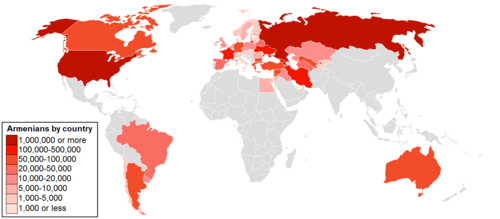History
Armenians had traded with Ethiopia from as early as the first century AD. [4]
Armenians have a very old presence in Ethiopia. One of the first recorded diplomatic missions to Europe from Ethiopia was led by Matthew the Armenian who traveled to Portugal and Rome at the request of the Dowager Empress Eleni of Ethiopia to appeal for aid against Islamic incursions into Ethiopia in the early 16th century.
Besides the obvious religious affiliation, there is also the story of the "Arba Lijoch" children coming to Ethiopia after the Armenian genocide. Arba Lijoch were a group of 40 Armenian orphans who had escaped from the atrocities in Ottoman Empire, and were afterwards adopted by Haile Selassie I of Ethiopia, then Crown Prince Ras Tafari. He had met them while visiting the Armenian monastery in Jerusalem. They impressed him so much that he obtained permission from the Armenian Patriarchate of Jerusalem to adopt and bring them to Ethiopia, where he then arranged for them to receive musical instruction. [5]
The Arba Lijoch arrived in Addis Ababa in 1924, and along with their bandleader Kevork Nalbandian became the first official orchestra of the nation. Nalbandian also composed the music for Ethiopia Hoy (words by Yoftehé Negusé), which was the Imperial National Anthem from 1930 to 1974. [6]
The Armenian population peaked shortly before the Italian invasion in 1935 at around 2,800. By the fall of the Ethiopian monarchy in 1974, it was around 2,000, after which the numbers fell significantly. [7] [8]
This page is based on this
Wikipedia article Text is available under the
CC BY-SA 4.0 license; additional terms may apply.
Images, videos and audio are available under their respective licenses.


